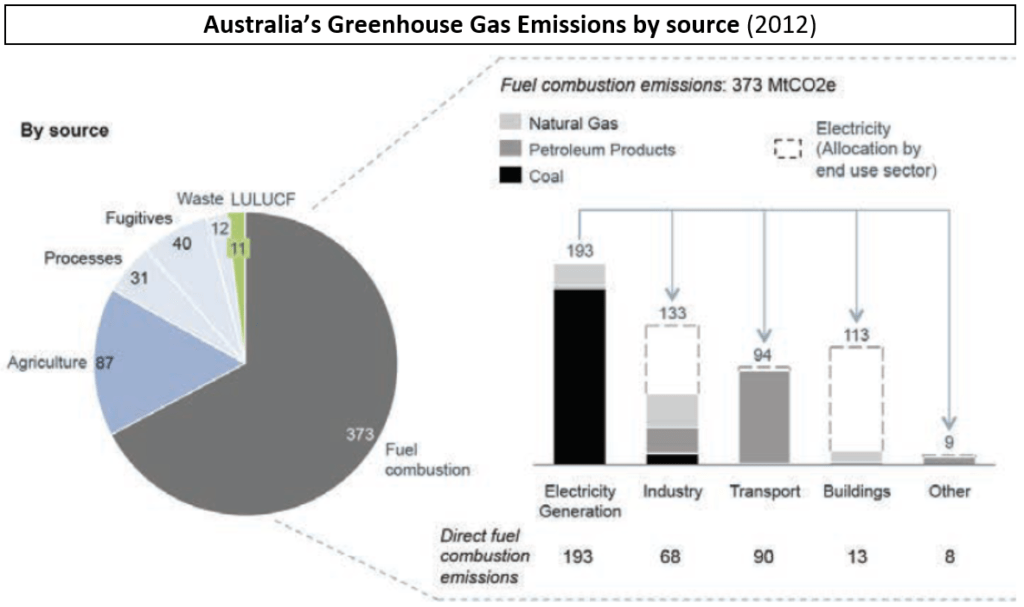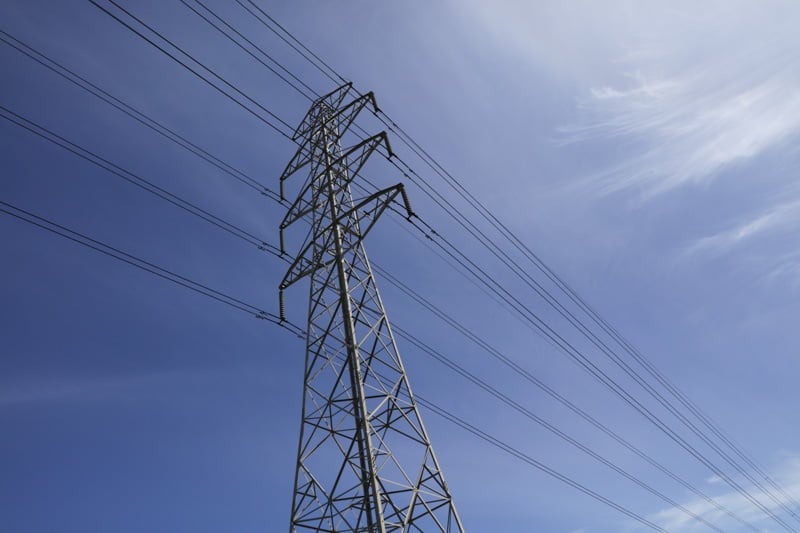Start with the sectors that contribute the most to Australia’s greenhouse emissions. Target the following sectors: electricity, stationary energy, transport and agriculture. While the below analysis is based on 2012 data, it clearly illustrates how fossil fuels (coal, petrol and natural gas) are the source of emissions for electricity, industry & buildings (stationary energy) and transport.
Phasing out fossil fuels is the key to decarbonisation.

Source: Pathways to Deep Decarbonisation, Climate Works Australia, ANU (2014).
The economic recovery from COVID-19 is an opportunity to invest in the energy transition and decarbonise the economy:
- Modernise and decarbonise the electricity grid
- Policy certainty is key: introduce a carbon tax (details below) and support energy reliability;
- Fund upgrades to the transmission grid (in accordance with AEMO’s Integrated System Plan) to increase grid reliability as more renewable energy generation enters the system;
- Underwrite energy storage projects to further ensure grid reliability (e.g., pumped hydro, batteries and hydrogen)
- Support the Energy Security Board in its role to coordinate the post-2025 market redesign of the National Electricity Market;
- Implement a mechanism to support grid-firming generation (the “operating reserve demand curve” is the preferred option). This will stimulate private investment in energy storage, including pumped hydro and batteries;
- Introduce residential electricity prices that vary by hour (aka real-time pricing), facilitated using already available smart meters. This will allow electricity users to access cheap energy prices at times when renewables are abundant;
- Target stationary energy emissions by updating industrial and residential energy systems
- Switch all residential gas heating and cooking to electric systems by 2030;
- Invest $220m to modernise energy systems for 1,000 Australian manufacturers (as proposed by WWF & EY);
- Expand Australia’s support for green hydrogen under the existing $300m Advancing Hydrogen Fund, including participation in hydrogen electrolysis, storage and utilization (including green steel) projects.
- Electrify the transport, freight and logistics sector
- Transition to light electric vehicles (cars, e-bikes and other small EVs) powered with green energy;
- An immediate $240m investment to electrify 500 metropolitan commuter buses (also proposed by WWF and EY);
- This will support the development of Australia’s lithium-ion manufacturing industry and position Australia to provide electric buses to local markets;
- Support hydrogen fuel-cell vehicles for material-handling, trucking and shipping where safe and appropriate.
- Promote sustainable farming and agricultural practices
- Adopt a supply-chain view of emissions from pasture to plate;
- Transition on-farm energy supply to renewable sources including wind, local PV (solar)+storage or biomass;
- Reduce carbon emissions due to land clearing, potentially reaching net negative emissions through reforestation, seagrass, and other initiatives
- Localise food processing to minimise transportation and food waste (with the added benefit of enhancing local economic outcomes)
For more details on how we plan to drive emissions reductions across these sectors, please refer to our Energy & Infrastructure and Sustainable Agriculture platforms.

